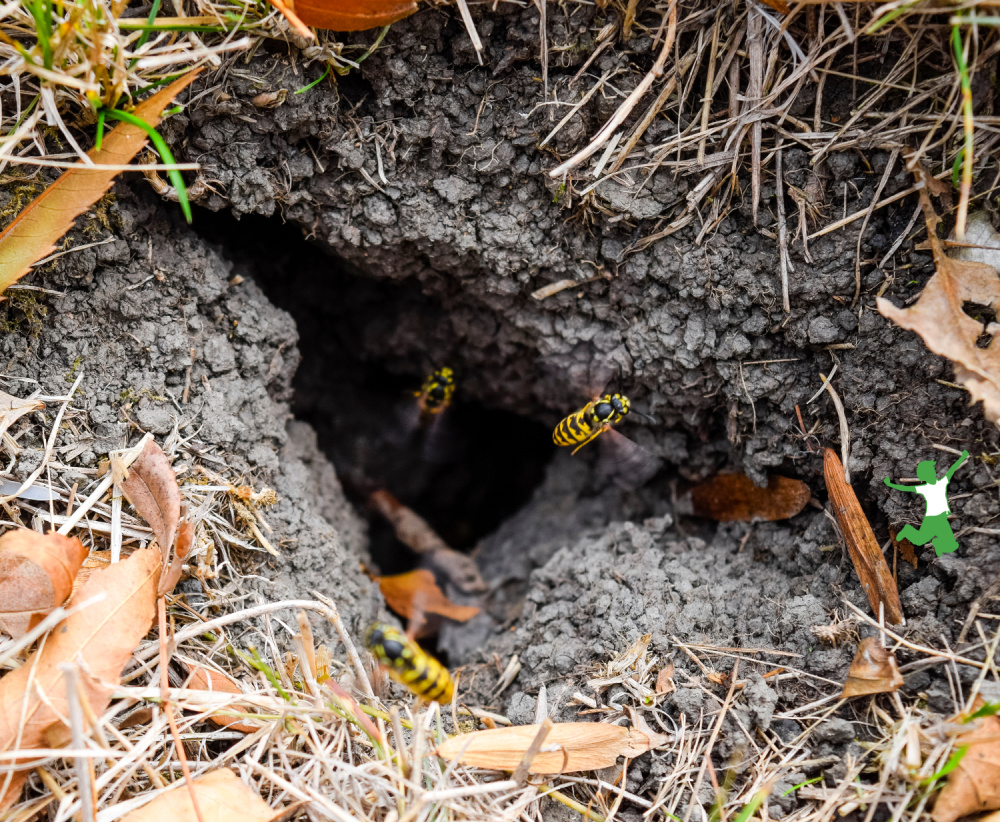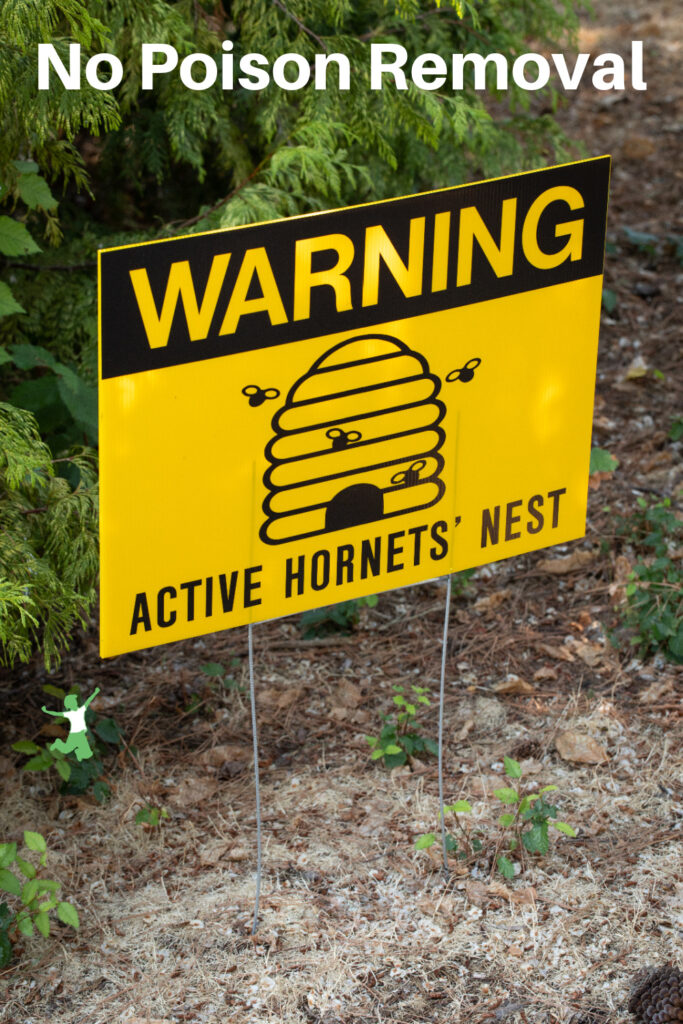An easy and safe method for removing an underground yellow jacket or hornet’s nest with no poison and no risk of stings to you!

My recent article on removing wasp nests using a brown paper bag resulted in several requests about how to do the same for hornets and yellow jackets.
Unlike wasps, which typically build their nests in trees or the eaves of a roof, hornets and yellow jackets are sneakier, favoring underground locations.
A hole in the ground where the insects come and go is the only evidence that a huge nest could be lurking beneath the soil!
Conventional Method for “Ground Bees”
A few years ago, there was a large yellow jacket nest underground on the property line between our home and my neighbor.
It was a big risk for someone to inadvertently disturb the nest and get stung while mowing or doing yard work.
Obviously, the nest needed to be removed right away.
My neighbor, who is an experienced and credentialed biologist, thought it would be most effective to use chemicals.
He donned a bee suit for protection and applied the mix into the hole during the night when the yellow jackets were least active.
It took several applications before the nest was fully eradicated.
Needless to say, neither of us was happy to be using chemicals. We just didn’t know of another method at the time.
As it turns out, there is an easy way to get rid of ground nests….poison-free!
I will definitely be using this approach in the future.
Poison-Free Nest Removal
I recently became aware of how to remove ground hornets and yellow jackets without chemicals. This tip is from Rachel, a reader friend who commented on the wasp nest article.
She wrote (reprinted with permission):
A neighbor told me a wonderful solution for getting rid of ground bees (yellow jackets, etc) that build nests underground.
He just pops a marshmellow or something sweet (granola bar, etc.) into the hole in the evening, and that attracts the skunks, which then happily eradicate the nest, as they consider bees a delicacy!
I tried this when yellow jackets nested in a raised bed; within a few nights, they were gone!
What a fantastic idea! The only catch is that you need to have skunks or some related species of stink badgers in your community.
Animals That Eat Hornets and Yellow Jackets
Since we don’t have a lot of skunks in my community anymore due to the rapid development of the last decade or so, I initially did not think this method would work well for me.
However, after doing more research, I found that raccoons and armadillos will also happily eat up a ground nest full of hornets or yellow jackets! (1)
We have A LOT of those critters.
Thus, if you don’t have skunks around to use the granola bar approach, try a can of pet food to bring in the raccoons!
Wet pet food will really attract raccoons, in my experience. I’ve used this approach to humanely trap them if they were threatening my laying chickens in the past.
If you prefer to avoid attracting raccoons as they can get into chicken coops, try using overripe fruit, mealworms, or spoiled meat to attract armadillos.
These heavily armored mammals with a long snout won’t attack backyard chickens. (2)
Be aware that black bears like ground bee nests too.
So, measures to attract skunks, raccoons, or armadillos could inadvertently invite bears to the party if you live in a rural area.
For areas of the world without raccoons, armadillos, and skunks, it’s good to know that domesticated ducks will also happily eat up a ground hornet or yellow jacket nest! (3)
Avoiding Stings
If you decide to try this method, be sure to put the bait in the nest hole at night when the hornets or yellow jackets are dormant.
This will virtually eliminate your risk of stings.
You may need to repeat the process for a few nights in a row for complete removal.
Fall is a great time to take care of ground bee nests that have cropped up during the warmer months.
I hope this method is helpful to some of you grappling with how to eliminate them safely without poison!

(1) What Animals Attack Yellow Jacket Nests in the Ground?
(2) Best Armadillo Bait
(3) Ducks Eat Yellow Jackets??!! Maybe so…








Hornet nest—had a lively one 3 weeks ago in one of my compost bins, which consequently I couldn’t get into–and a heap of weeds was waiting on the ground for lack of a receptacle. Four costly ($5 each) cans of Black Flag hornet spray were a total waste of money (and days). I had on hand two pieces (~24″) of 2″ PVC pipe, connected them with a 90 elbow (purchased at Lowes for $1.18), such that one pipe, horizontal, led into the nest, the other ran vertically. I set the pipes in one evening. Next evening, with a funnel and husband’s help, I poured 4 gal of boiling water into the upright pipe. Did it again the following evening as well, just to make sure.
Fantastic
Thank you.
Tobacco, chewing. Or cigarette, moistened.
Put on the string. Cover w bandaid. It works to take sting out.